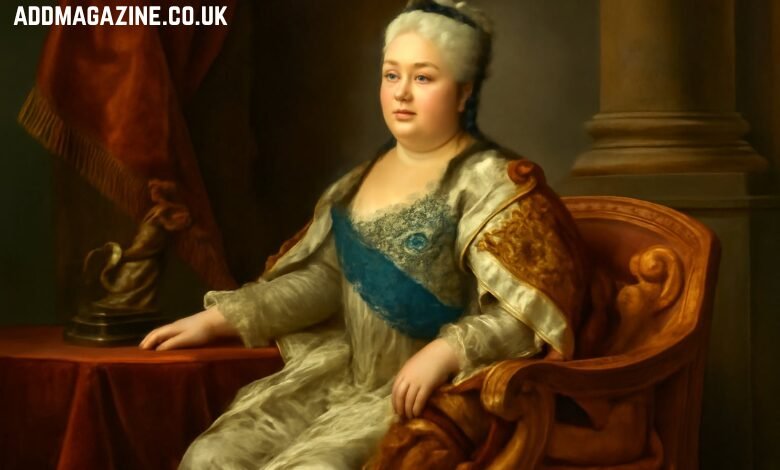Catherine the Great, born as Sophie of Anhalt-Zerbst in 1729, is one of the most prominent and celebrated figures in history. As the Empress of Russia from 1762 until her death in 1796, she ruled for 34 years, making her the longest-reigning female monarch in Russian history. Catherine’s reign is remembered for its remarkable expansion of Russian territories, her patronage of the arts, and her contributions to the Enlightenment movement, which aimed at modernizing Russia and aligning it with European cultural trends. However, her legacy is also clouded by the salacious rumors and myths that have surrounded her personal life, including tales of erotic furniture supposedly linked to her reign.
The Power of Catherine the Great’s Rule
Catherine ascended to the Russian throne after orchestrating a coup that overthrew her husband, Peter III, in 1762. A shrewd and ambitious leader, Catherine took full control of the Russian Empire, stabilizing the country and expanding its borders significantly. Under her rule, Russia gained valuable territories, such as parts of Poland, the Crimea, and vast areas along the Black Sea, which cemented her position as one of Europe’s most powerful monarchs.
In addition to her military conquests, Catherine is often credited with transforming Russia into a major cultural force. She greatly expanded the Russian Empire’s influence by embracing Enlightenment ideals, particularly in areas of education, literature, and the arts. She founded the Hermitage Museum, one of the world’s most esteemed cultural institutions, and amassed one of the largest collections of European art, including works by renowned artists like Rembrandt and Titian. Catherine’s contributions to Russian cultural life were not only reflective of her personal taste but also of her desire to elevate Russia’s status on the global stage.
The Personal Life of Catherine the Great: Scandal and Rumor
While Catherine’s public life was filled with political achievements, her personal life became the subject of intense scrutiny, particularly in a male-dominated society where powerful women were often seen as a threat. Catherine’s marriage to Peter III was unhappy, and the couple’s relationship deteriorated rapidly. Peter, who was incompetent and unpopular, was overthrown by his wife in a palace coup, which led to his suspicious death shortly afterward.
In the wake of her husband’s demise, Catherine’s relationships with various men became the focal point of public gossip. It was said that she had many lovers, with some even suggesting that her rule was influenced more by her sexual relationships than her political acumen. These rumors, often exaggerated and rooted in sexist stereotypes, sought to undermine her authority as a female ruler.
One of the most enduring and peculiar rumors associated with Catherine’s reign is the claim that she commissioned a series of erotic furniture pieces, allegedly created to satisfy her private desires. While there is no conclusive evidence that such furniture ever existed, the myth has persisted for centuries, contributing to Catherine’s scandalous legacy.
The Myth of Catherine the Great’s Erotic Furniture
The legend of Catherine’s erotic furniture is one of the most enduring myths surrounding her reign. The story goes that Catherine, in keeping with her reputation as a woman of strong sexual appetites, ordered the creation of an “erotic cabinet,” which supposedly contained furniture adorned with explicit imagery. This furniture, according to some accounts, included chairs, tables, and screens that were decorated with phallic symbols and erotic carvings. It was even rumored that an entire wall of the room was covered in intricately carved wooden phalluses of varying shapes and sizes.
The most detailed and widely circulated version of this story claims that the erotic furniture was hidden away after Catherine’s death, largely due to her son, Paul I’s disdain for his mother’s sexual legacy. The existence of such a room was further fueled by reports from World War II soldiers who allegedly discovered the furniture when they occupied the Tsarskoye Selo palace in 1941. However, the photographic evidence supporting this claim is unclear and has been the subject of much debate among historians.
Origins of the Erotic Furniture Myth
While some historians have dismissed the stories of Catherine’s erotic furniture as baseless rumors, others believe the myth may have originated from exaggerated depictions of her private life. Catherine, after all, was a woman who wielded immense power in an era when such authority was largely reserved for men. Her numerous relationships with powerful men like Grigory Orlov and Grigory Potemkin, both of whom played key roles in her rise to power, fueled rumors of her sexuality and lewd behavior. These rumors were often used by her political rivals to undermine her credibility as a ruler.
The idea that Catherine commissioned erotic furniture may also be tied to the broader tradition of erotic art in European and Russian culture during the 18th century. Erotic furniture and art were not uncommon in certain royal and aristocratic circles, where such items were often seen as symbols of wealth, power, and indulgence. Kings and emperors, including the likes of King Edward VII of England, were known to commission pieces of furniture designed with erotic themes, and Catherine may have been following this tradition. However, there is no concrete evidence linking her to such commissions.
The Role of Propaganda in the Catherine the Great Myth
The myth of Catherine’s erotic furniture can also be viewed through the lens of political propaganda. In a society where women were often dismissed as incapable of ruling effectively, the rumors surrounding Catherine’s personal life were used to discredit her as a serious political leader. These salacious stories of sexual indulgence, including the supposed erotic furniture, were tools used by her critics to shift focus away from her political accomplishments and onto her gender and private life.
It is important to recognize that such myths were not unique to Catherine. Throughout history, powerful women have often had their reputations tarnished by rumors of sexual promiscuity, as seen in the cases of figures like Cleopatra and Queen Elizabeth I. In Catherine’s case, the erotic furniture myth may have been an attempt to reduce her power to mere scandal and strip her of the political respect she had earned through her rule.
The Authenticity of the Erotic Furniture: Fact or Fiction?
Despite the persistence of the erotic furniture legend, there is no definitive proof that Catherine the Great ever commissioned such items. Many historians believe that the stories surrounding her erotic furniture are largely the result of myth-making, possibly fueled by political enemies or jealous rivals. While there are accounts from the 19th century that reference “erotic furniture” in connection with Catherine, these accounts are often vague and lack concrete evidence.
The most compelling argument against the authenticity of the erotic furniture comes from the fact that no such pieces have been found in the extensive art collections left behind by Catherine the Great. The Hermitage Museum, which houses many of the objects collected by Catherine during her reign, has no record of erotic furniture, and there is no physical evidence that such pieces were ever part of her collection.
Some historians argue that the story of Catherine’s erotic furniture was a piece of wartime propaganda used by Nazi soldiers during World War II. The soldiers are said to have taken photographs of furniture they allegedly found in the Tsarskoye Selo palace, but these photographs were never verified and were lost during the subsequent bombing of the palace. Moreover, there is no definitive documentation that confirms the authenticity of these photographs, leaving the story of the erotic furniture in the realm of speculation.
Catherine the Great’s True Legacy
While the legend of Catherine the Great’s erotic furniture may remain a tantalizing mystery, it is clear that her true legacy lies in her achievements as a ruler, patron of the arts, and cultural reformer. Catherine’s reign was marked by a series of significant political, economic, and cultural transformations that helped modernize Russia and elevate it to a position of prominence in Europe.
Her establishment of state-funded education for women, her extensive patronage of the arts, and her contributions to the Russian Enlightenment solidified her place in history as one of the greatest female monarchs. Catherine the Great may have been the subject of countless myths, but her accomplishments and lasting impact on Russia are undeniable.
Conclusion
The myth of Catherine the Great’s erotic furniture continues to captivate the imaginations of historians, art enthusiasts, and the general public. However, the lack of concrete evidence and the absence of definitive records suggest that this story may be just another example of how historical figures, particularly women in power, have their personal lives used to deflect attention from their accomplishments.
Regardless of whether the erotic furniture ever existed, Catherine the Great remains one of history’s most influential and transformative figures. Her legacy, shaped by her political savvy, her cultural patronage, and her vision for a modern Russia, is far more significant than any scandalous rumors that have endured through the centuries.




